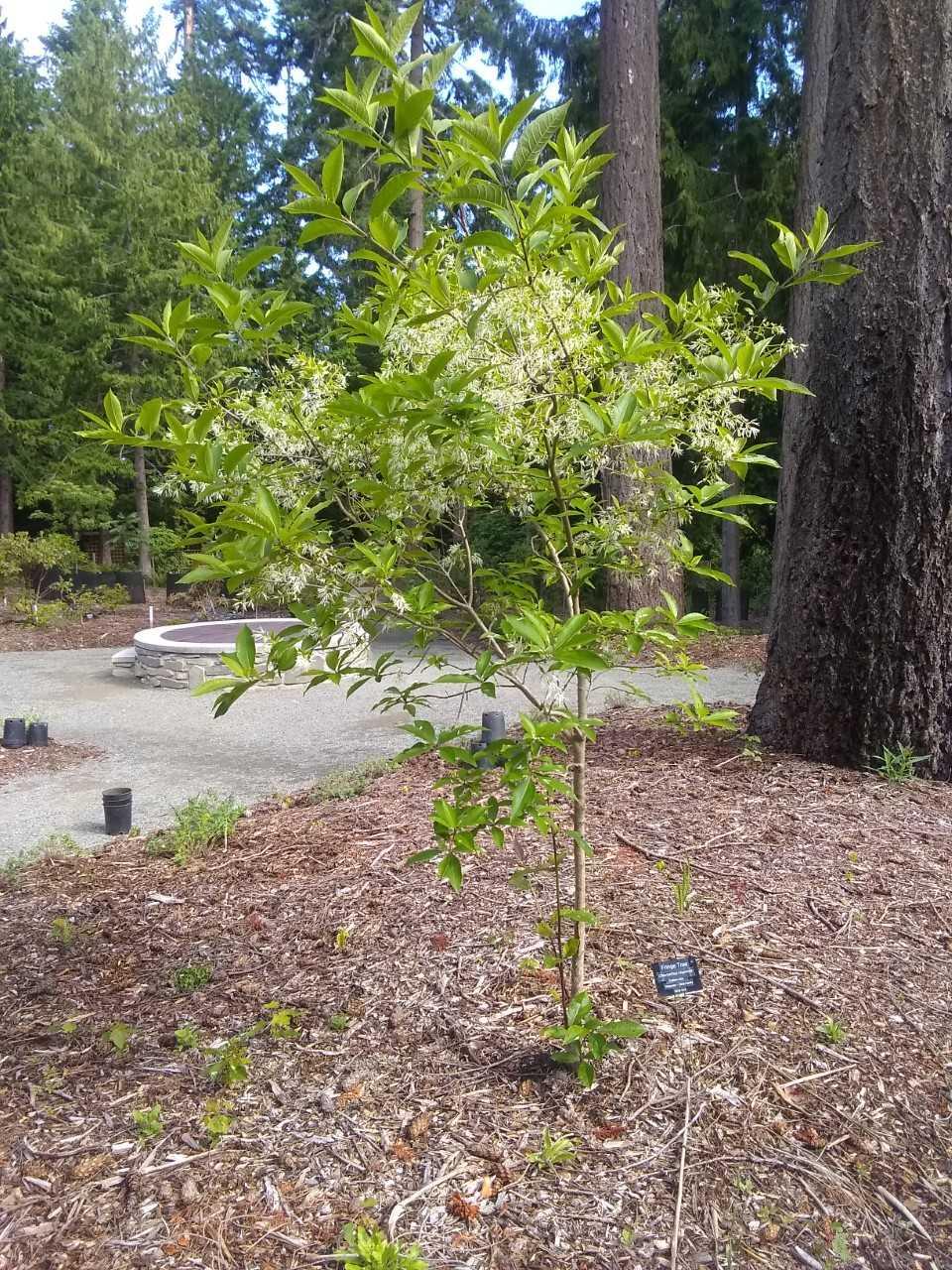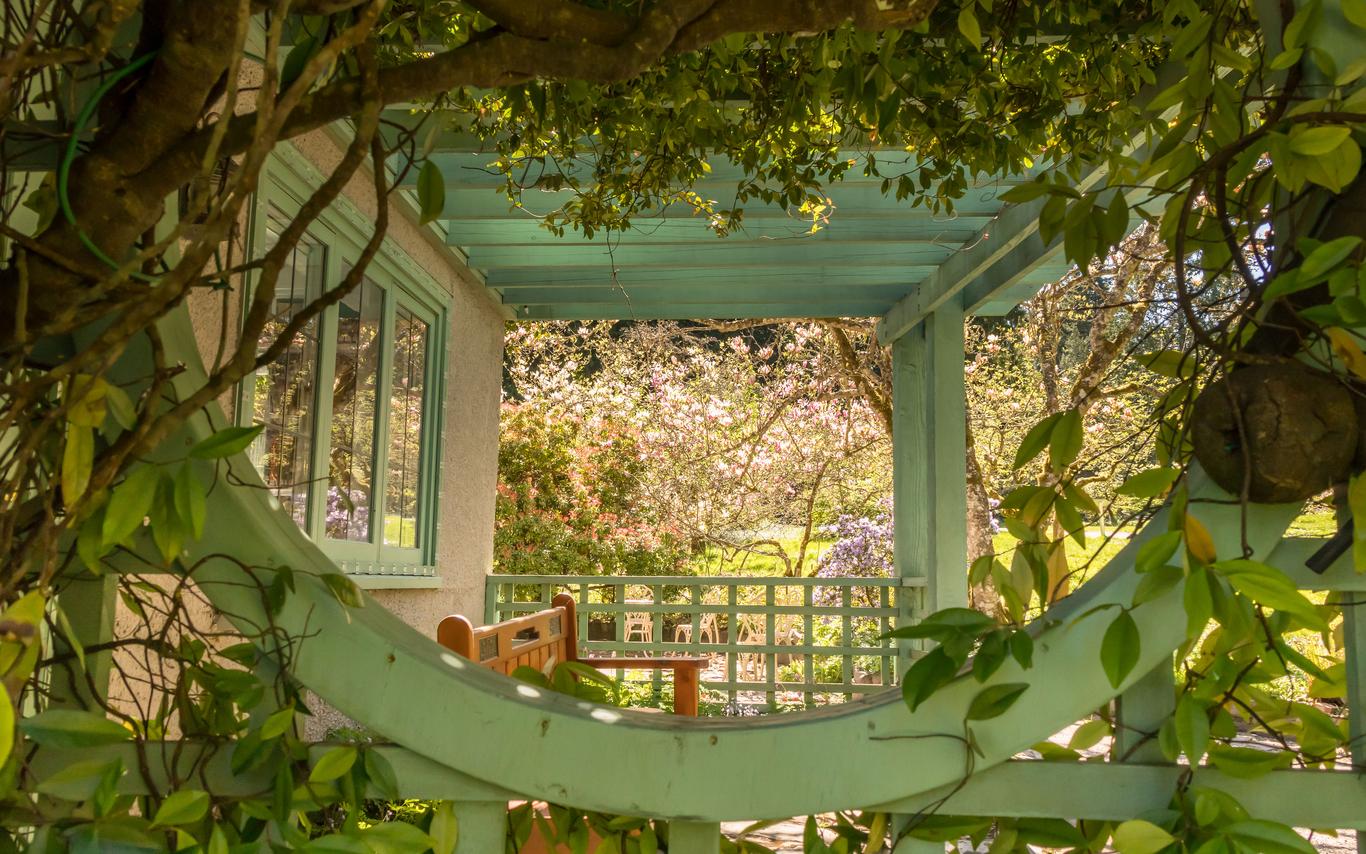Latin name: Chionanthus virginicus
Common Name: Fringe tree, Old Man’s Beard
by Vancouver Island Master Gardeners Association
This tree is cultivated mainly for its fragrant, multi-branched flower heads (panicles). In bloom, it has a profusion of large, fleecy, white flower heads drooping from its branches. While very late to leaf out, the tree is also attractive for its large, glossy, dark-green foliage which turns bright yellow in fall. Because of its small size it is a suitable feature tree for city gardens. Some trees bear only female flowers, while others are only male. While the flowers are on male trees are larger, only the female trees will bear small, blue-black fruit which are attractive to birds.

Foliage type: Glossy, elliptical leaves with entire border of 8” (20 cm)
Height/Width: While it can grow to a greater height, C.virginicus more commonly grows to 10 ft (3 m) and if grown as a shrub, its diameter can match its height.
Hardiness Zone: To zone 5
Exposure: Full to partial sun
Flower Colour: White panicles of 8” (20cm)
Leaf Colour: Dark green; fall colour: bright yellow
Flower Time: Early Summer (June)
Preferred Soil and Watering: Growths in a variety of habitats, including woodlands, near streams and on rocky outcroppings. Prefers moist but well-drained, fertile soil.
Pests and Diseases: Rare
Other:
The genus, Chionanthus, has about 10 species, most of which occur in tropical regions. C. virginicus is native to SE USA.
It seldom needs pruning, but can be pruned after flowering. If grown as a tree, side shoots should be removed.
It is suitable for smaller city gardens because of its size and because it tolerates air pollution
It is one of the last trees to leaf out in spring.
References: A-Z encyclopedia of Garden Plants. Eds: Christopher Brickell and Trevor Cole. Dorling Kindersley Ltd 2004
Southern Living: fringe tree the best native nobody grows

